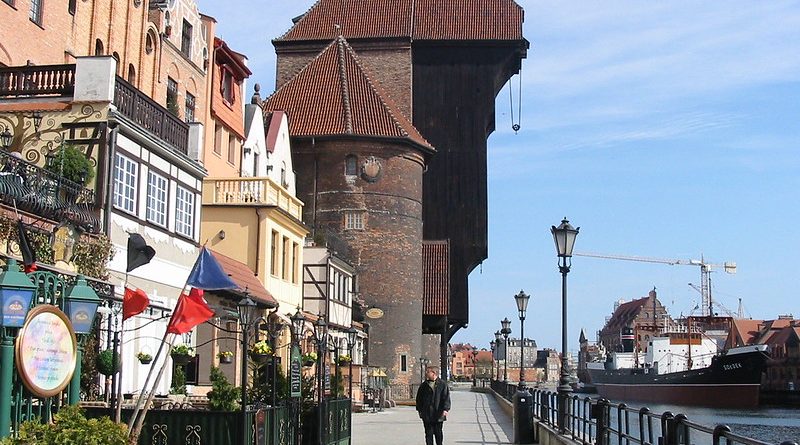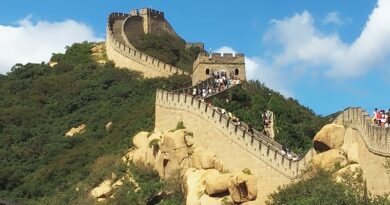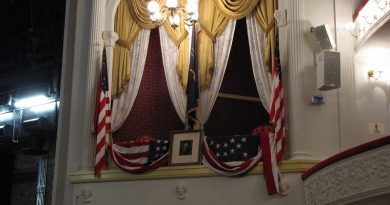A Short History of Poland
Poland is, above all, a surprise. The 9th largest country in Europe with a population of 38.5 million seems to pop up out of nowhere and puts down its trump cards one by one: The world’s largest Gothic fortress, the largest sand dunes in Central Europe, the best kite surfing spots, Europe’s longest wooden pier, the oldest health resorts on the Old Continent and the world’s oldest oil well. 80 years after the end of WWII, which left Poland greatly devastated, the Polish nation is slowly becoming known as a proper travel destination that caters for adrenaline junkies, beach potatoes and history buffs alike.
Geography
Situated in central-eastern Europe with Lithuania, Ukraine and Belarus in the east, giant Russia to the northeast, and Europe’s power engine Germany in the west, as well as Slovakia and Czech Republic in the south, Poland stretches from the Baltic Sea to the Carpathian Mountains, boasting a variety of geographical landscapes. Being cradled in between so many countries is an indication of its fate for many centuries: colonized, divided, unified, exploited and ruined by reckless occupying forces that all sought to gain the maximum of its strategic coastal cities and bountiful plains.
A Tumultuous History
The history of Poland is tumultuous. It enters the history books only in the 10 century after having been inhabited by Celts, Balts, Scythians, Huns, Goths and Germanic peoples until then. The entry into the second millennia was marked by the de facto creation of the Polish state by Duke Mieszko I (ca. 940-992), when the Polania tribe became dominant. This first historical ruler of Poland from the Piast dynasty managed to unite the different groups into one cohesive unit, naming it Polska (Poland). He continued the legacy of both his father and grandfather who were rulers of pagan tribes. He was known to be a charismatic and strategically thinking man, a strong military leader who forged diplomatically important alliances with Bohemia, Sweden and the Holy Roman Empire and managed to expand its territory and strengthen its position on the European continent.
Mieszko I’s marriage in 965 to a Czech princess and his subsequent baptism in 966 pushed the country into the sphere of Western Christianity. Little did he know then that Cardinal Karol Wojtyla from Poland would become the first non-Italian in four hundred years, one of the most popular popes ever, and the only Polish citizen to lead the Roman Catholic Church from the Vatican a millennia later. Contemporary Poland remains almost 90% Catholic, and devoutly Catholic indeed.
The Medieval World
The Piast dynasty ruled Poland until the mid 14th century. Then the Polish crown was passed on to 10-year old Jadwiga, and the country formed an alliance with the pagan Lithuania, when she married Duke Jagiello of Lithuania. He too converted to Christianity. The Jagiellonian dynasty led Poland for almost 200 years and created a strong alliance with Lithuania for almost 400 hundred years. In these medieval years, bitter and epic wars are fought with enemies such as the Teutonic Knights, the Russians and the Ottoman Empire. The Jagiellonian dynasty achieved many military successes, forming the powerful Republic of Two Nations, but died out in 1572.
One of the greatest medieval battles, the Battle of Grunwald on 15 July 1410 during the Polish-Lithuanian-Teutonic War, routed the armies of the Teutonic Knights, who would never regain their former might. Today, Poland remembers this battle in an annual reconstruction with thousands of Knights, horsemen and horses in front of huge spectator crowds, as the battle is symbolic for the Polish people in their struggle against occupiers and invaders. The battle is shrouded in legends and heroic myths, and both Nazis and Soviets would later use the battle in their own respective propaganda campaigns.
The Renaissance
Poland was inspired by wave of Renaissance as much as the rest of Europe, last but not least courtesy of Nicolaus Copernicus (Mikolaj Kopernik) who published “On the Revolutions of the Celestial Spheres” in 1543, proposing the groundbreaking idea that the earth revolves around the sun. He was one of many 16th century Renaissance men, who brought forth individual advances in the scientific and artistic area, which slowly filtered into the European consciousness during that era. Until then, the belief formed by the Greek scholar Ptolemy that the earth was stationery and all planets evolved around it, had been held as gospel truth by church and public alike. This Pole became the Father of modern Astronomy but it would take centuries until he became truly recognized for his influence.
In 1569, Poland and Lithuania were united as one state, a union that had begun to emerge after the Grunwald battle. The Royal succession was now based on election from the Parliament (nobility) and changed the political landscape of Poland greatly. Until the end of the 18th century only four out of eleven kings would be Polish natives. And despite its original successes, it was the beginning of a political decline for Poland that saw Poland being divided, colonized, reunited and taken apart again by its big cat neighbours playing mouse with it at any given opportunity.
Invasion
Between 1655-60, Sweden invaded Poland and cities were burned and plundered as a population of 10 million was reduced to 6 million due to war, famine and bubonic plague. In the 1700s, Russia, Prussia and Austria were each eyeing Poland but were cautious to get involved in a war with each other. They settled their greed by dividing Poland in the first of the “Three Partitions of Poland”. In 1793, a second partition follows, and Russia and Prussia took over half of what is left of Poland at the time, which is followed by a revolutionary attempt led by Tadeusz Kosciuszko, the famous general who helped to win the American Revolution. But the rebellion was too weak and not strong enough to defeat the Russians. In 1795, the Third Partition divided the rest of Poland and the country was officially ‘non-existent’ for the next 123 years.
A Nation Regained
Poland regained its sovereignty on 11 November 1918 after the end of WWI. It was a short-lived freedom. During the war, the Poles had been forced to fight their own people as the three occupying powers were at war with each other. More than one million people had died. In 1919, the Treaty of Versailles gave eastern Prussia to Poland and the nation gained access to the Baltic Sea. It would take until 1923 to reform the nation. In the 1930s, Poland signed nonaggression pacts with both Russia and Germany to avoid further escalation and occupation. It proved a fruitless endeavor.
The Nazis
The process of rebuilding and uniting the nation was still underway when at the outbreak of WWII, a six-year German and Soviet occupation began. On 1 September 1939 Germany invaded Poland in a Blitzkrieg, an attack that came without any warning or declaration of war, but had been a secret arrangement with Russia in the nonaggression pact between Germany and Russia. In the six years of Poland’s occupation, the Nazis set up their infrastructure and a well hidden headquarter (one out of 14 completed headquarters) deep in northeast Poland, the infamous ‘Wolfsschanze’ (Wolf’s Lair). Seven decades later, Wolf’s Lair is a must-see for those who dare the trip to the far end of Poland. During WWII, almost the entire population of Poland was wiped out and its main cities of Warsaw, Krakow and Gdansk suffered severe or almost complete destruction.
The Soviets and Beyond
From 1945 until 1989, Poland remained under Soviet dominance as Russia had already occupied parts of Poland during the war. The years under communistic rule are still felt and seen in Poland’s architectural landscape today. Many internal political events and social developments in Poland between 1950 and 1989 went unnoticed by the world, until the day the Iron Curtain disappeared. In 1989, Poland became the Republic of Poland, a fully democratic nation that has been leading Eastern Europe’s escape from Communism, certainly with a vodka toast in to the ‘good old days’ in between. Having survived no fewer than 43 invasions and battles for independence between 1600 and 1945, Poland is now a proud member of the UN, NATO and EU, and has produced 17 Nobel Prize laureates, four for peace and five in literature.




